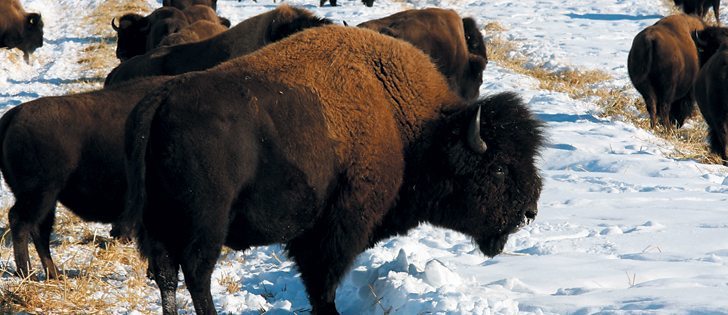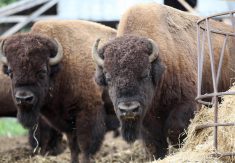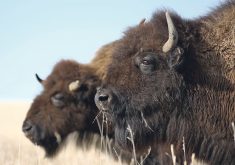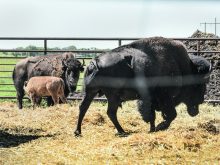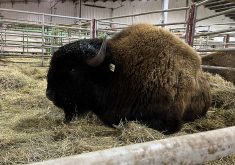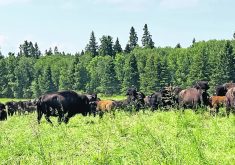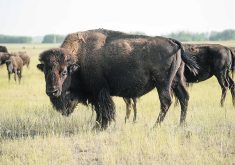Corn, grass, oats | Producer says there are new high yielding grazing corn varieties available
PONOKA, Alta. — Cattle aren’t the only animals that benefit from rotational grazing in the summer and grazing corn in the winter.
Improved pasture and grazing management also increases bison weight gain at reduced cost, said a northern Alberta bison manager.
Brian Olfert, manager of Adam Ranch Bison, said he successfully grazes 450 bison cows on 160 acres of corn during winter.
“I have never seen my cow herd in better shape,” said Olfert, who bought a used corn planter to grow a corn crop for his bison near Bezanson, Alta.
Read Also

Beef check-off collection system aligns across the country
A single and aligned check-off collection system based on where producers live makes the system equal said Chad Ross, Saskatchewan Cattle Association chair.
He told the recent Bison Producers of Alberta conference that grazing bison in corn during the winter for the last five or six years has reduced the amount of nitrogen required for the corn crop.
He estimated that the corn yields 12 tonnes per acre and costs 88 cents a day to feed the cows.
He said it’s not hard to grow high yielding grazing corn with new grazing corn varieties, even in northern Alberta. Swath grazing doesn’t work because of excess snow and wild game in the region.
Olfert hopes that growing corn will maximize production on the 8,000-acre ranch, which runs 800 bison cows. It’s a 100 percent increase from when he took over as manager 10 years ago.
Olfert’s goal in summer is to maximize the grazing capacity of the grass. The cows aren’t turned out on pasture until June 1 to allow the grass to establish. The bison are rotated quickly through the grass once they are turned out to graze.
“Bison like to be moving,” said Olfert, who puts 500 animals on a quarter section and moves them onto other pasture after three or four days.
Oats are planted and grazed three times to flush the cows for breeding.
Olfert said producers shouldn’t be scared to ask questions about feed, nutrition and general care of bison. He uses a bison nutritionist to fine tune nutrition for his livestock.
“Don’t be afraid to go to producers and ask questions,” he said.
Olfert also buys a lot of hay for his calves. The hay is processed with whole oats and fed in bunks.
As well, the ranch makes hay silage, wrapping 3,000 bales last year. It was a lot of work but eliminated concerns about feed quality.



